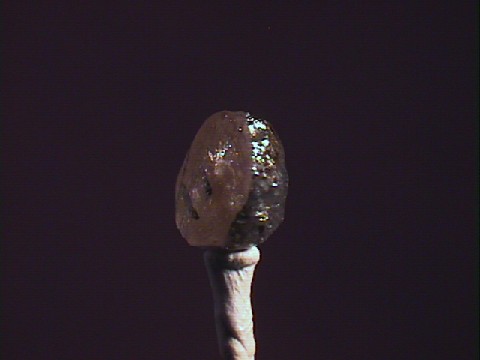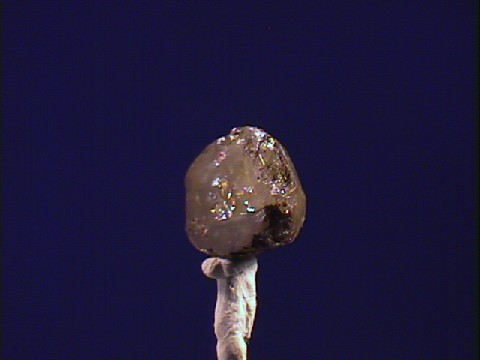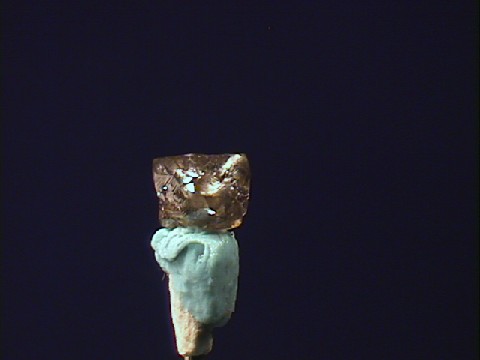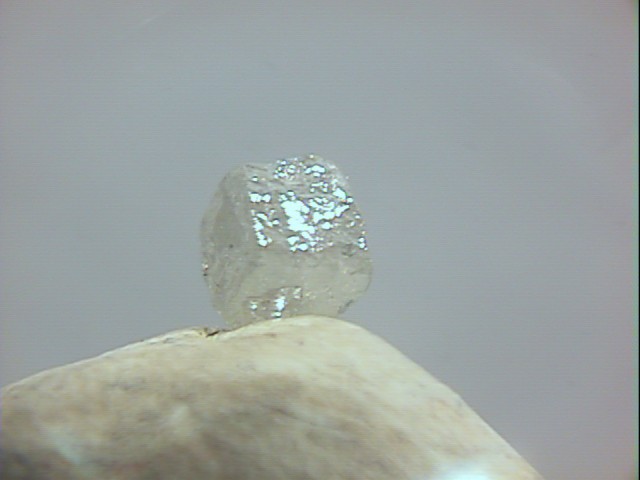|
|
Top 4 Buying Tips Aside from being one of the most expensive items you will probably ever buy, diamonds can also be one of the trickiest. Just think about it - cars, homes, major appliances can all be thoroughly researched and inspected prior to purchase. But with diamonds, most consumers wind up placing far too much faith in their salesman simply because theyíre not well enough informed. Can they be blamed, though? The amount of misinformation floating around out there is truly disconcerting - especially since most of it is placed by those with an interest in getting you, the consumer, to spend more than you need to. Here are four tips to make sure you get the best deal you possibly can. Follow this guide, and you can be confident that you didnít spend more than you need to, that you got the best looking diamond possible for the money, and that you havenít fallen prey to the most common tricks employed by diamond sellers: 1) Color Lets review the basics. Diamond color is graded from D, being completely colorless, to Z, showing significant yellow. The vast majority of stores only sell stones from D to J or K. The most common mistake people make when faced with that range of options is they think to themselves, ďWow, D to K, thatís a big range. I better stick to the top of that range, or else Iíll be stuck with a yellowish diamond.Ē What most people donít realize is that only at the very end of that range do diamonds begin to show any signs of significant yellowishness. Hereís what you should keep in mind when deciding what color diamond to get: The first thing you need to do is figure out what kind of setting you want. Opting for a setting in yellow gold will allow you to go lower in color and either save the difference, or use the money to get a larger stone. So if youíre going for yellow gold, then if youíre buying a round diamond, opt for a K color. If itís another shape youíre after, keep it to J color. If youíre looking at a plain white gold or platinum band, then go for a J color round diamond, or an H color if itís a different shape. If the setting has larger sidestones (over 0.10ct each), youíll want to match the color of the center stone to the sidestones. 2) Clarity Again, lets review the basics. There are eight clarity grades that youíre likely to see in your diamond hunt. FL/IF (Flawless/Internally Flawless), VVS1, VVS2 (Very very slightly included 1st & 2nd degrees), VS1, VS2 (Very slightly included 1st & 2nd degrees), SI1, SI2 (Slightly included 1st & 2nd degrees), and I1 (Included). As with color, people often think that since thereís 8 grades, theyíd better stick to the top end of the spectrum, or else theyíll wind up with an ugly diamond. And like color, that line of thinking is completely false. The only thing that matters with clarity is that the stone be clean to the naked eye. People often mistakenly believe that the presence of inclusions in the diamond will cause it to be less brilliant. The only problem inclusions pose is that theyíre not nice to see in a sparkling diamond. But a barely eye clean diamond will look identical to a flawless stone, assuming all else is equal. Watch this video where people couldnít tell the difference between an H SI2 diamond and a G VVS2 graded diamond. The two diamonds in the video cost roughly $5000 and $13000 respectively, yet nobody could tell the difference.
The problem, though, is finding the lower clarity stone thatís still clean to the naked eye. For this, if youíre buying online, youíll need to make sure to stick with vendors that offer high quality images of their diamonds so you can inspect the layout and color of the inclusions.
3) Certification Make sure to only buy diamonds certified by GIA or AGS. The most common trick employed by jewelry stores is to certify their diamonds with much looser labs (most commonly, EGL) that significantly upgrade the diamondís grade. When they do this, customers see their (falsely graded) H VS2, and compare its price to a (correctly graded) GIA certified H VS2 and see that itís much cheaper. The true reason, of course, is that the diamond is, in fact, much closer to a J SI2 than it is an H VS2. But when you compare this falsely graded H VS2 to a GIA certified J SI2, youíll always find that the GIA certified diamond is actually cheaper.
4) Buy online Up until fairly recently, the diamond business always worked in pretty much the same way. Jewelry stores have two primary ways to acquire diamonds. They can either buy diamonds, or take them on consignment from wholesalers. If they buy diamonds, they can get a much better price, but to own a decent sized inventory of diamonds, even a small store must invest a significant amount of money if they want to offer a nice range of options (at least a few million dollars). For a business that is typically very low turnover, this is impossible to bear without serious financing. In order to afford such significant leverage, jewelry stores need themselves to charge a very high markup on the diamonds they sell. If they take diamonds on consignment, they wonít have the financial pressures that the stores that buy their diamonds have, but they will pay a much higher price for the diamonds that they sell. The wholesaler must charge more because it will take him much longer to collect on his investment and because the entire time the diamonds are sitting on the jewelry storeís shelves, they have lost the opportunity to sell them to another customer. When selling diamonds online became popular in the mid 1990s, this changed everything. Now, wholesalers could sell diamonds to an online store without committing their goods to the storeís inventory. All they would have to do is upload virtual feeds of their diamonds to the online seller who would then list the diamond for sale as if it were their own. This meant zero opportunity cost for the wholesaler, because if they sell the stone to someone else, they just remove it from their feed. Since this is the case, theyíre able to list the diamonds with the online retailer at their selling price, not their consignment price. When a diamond sells online, they simply ship the diamond to the online sellerís jewelry department for mounting, or directly to the customer if they buy it loose. Likewise, since the online seller doesnít need to invest in any inventory, they can sell for much lower margins. Nowadays, online vendorís margins are nearly only 10%! For more expensive diamonds, the margin is actually far lower. Jewelry stones in the meantime, have done all they can to lower their costs to try to compete with online dealers, but the fact remains that online retailers have a structural competitive advantage over them that they simply cannot compete with. So there you have it - follow these four tips: donít splurge on color, find a stone thatís just eye-clean, stick with GIA or AGS, and buy online! For more detailed information about diamond buying, visit www.diamonds.pro. |
 DIAMOND:
The Ultimate Gemstone
DIAMOND:
The Ultimate Gemstone












































































































